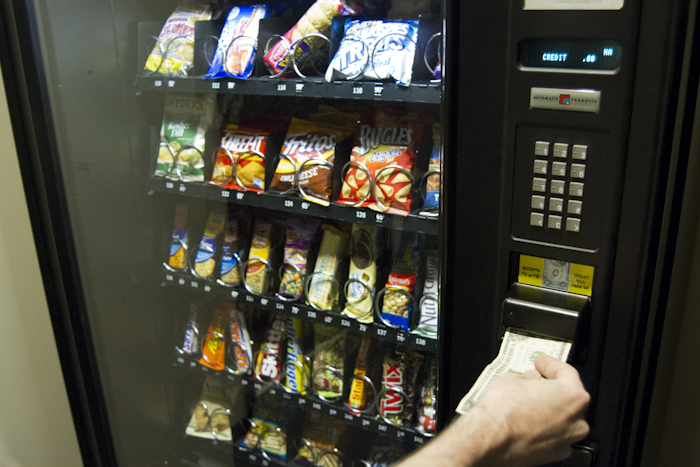
Care for a fizzy soda pop with that lunch room meal? How about a thick slice of pizza to add to that loaded-up cafeteria tray? Want a bag of chips or fries with that?
Chances are, many public school kids would say yes to any of the above. It might not be a healthy choice, but rest assured, these foods are served widely in school cafeterias. Unlike other food served in public schools, these goodies – soda, pizza, fries, salty snacks, the items you might find in the a la carte line or in vending machines -- are not subject to the same nutritional regulations.
That is set to change with the introduction of updated federal standards that could be in place by next year.
It is a move that, according to one poll at least, has broad support among the public.
The poll, part of a project called the Kids’ Safe & Healthful Foods Project – a joint project of the Pew Charitable Trusts and the Robert Wood Johnson Foundation – found that some 80 percent of those polled want standards regulating the calorie, fat and sodium content in these foods served to kids at school.
In the coming months, the U.S. Department of Agriculture (USDA) is expected to introduce updated nutritional standards for these foods that are not part of the federal school meal programs.
“Today many children get more than half their calories during the school day,” said Jessica Donze Black, registered dietitian and Project Director at the Kids’ Safe & Healthful Foods Project. “What these new standards will do is set a baseline for nutrition in school so that parents can feel confident that when they send their children to school the options available to them there are as healthy as foods available to them in other environments.”
Such items are often called “competitive foods” because they compete for student spending against more heavily regulated federal school meal programs. In January 2012, the USDA issued new nutritional standards for school meals, but the standards that govern the nutritional value of “competitive foods” are more than three decades old.
Despite national attention on the issue of childhood obesity, student’s access to snack food and beverages has increased over the past decade. The availability of vending machines in middle schools, for example, has more than doubled since the 1990s, the USDA reported.
On a typical school day, about 40 percent of students consume snack food or beverages available on campus, according to the USDA. Such foods were often unhealthy due to high levels of fat, sodium and calories, data from Bridging the Gap, a research program of the Robert Wood Johnson Foundation, found.
Interestingly, the call for increased nutritional standards is largely bipartisan with 89 percent of Democrats, 78 percent of independents and 71 percent of Republicans agreeing on the issue.
The USDA will accept public comments on the proposed regulations for 90 days following their release, with the final standards for snack foods and beverages expected to go into effect in the fall of 2013.
Clay Duda and John Fleming contributed to this article. Stock photo credit: Clay Duda/JJIE